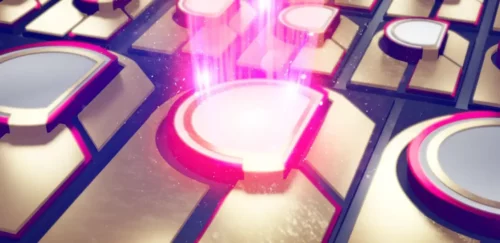Researchers have developed a way to modify the coherence of vertical-cavity surface-emitting lasers using chaotic cavities.

Semiconductor technology enables all components of a laser to be compactly packaged into a device that is only a few micrometers in size. This includes an optically active region that amplifies light and highly reflective mirrors on both sides. One such device is the vertical-cavity surface-emitting laser, or VCSEL, built by precisely placing, or growing, alternating layers of semiconductor on a substrate to create a highly reflective stack.
Scientists at KAUST have demonstrated a simple method of modifying compact semiconductor lasers to make them more suitable for illumination and holography. VCSELs are advantageous because hundreds can be created and used on the same substrate at the same time. But the beam is prone to a speckle-like profile, which makes it unsuitable for applications such as lighting, holography, projection, and displays. These require uniform light in the plane perpendicular to the direction of beam propagation.
Researchers have shown that speckles can be reduced in laser light from VCSELs simply by changing the shape of the device to break the symmetry of the cavity. This introduces chaotic behavior in the generated light and allows the emission of more modes. the team investigated VCSELs with a D-shaped cavity and compared it with those with the standard cylindrical, or O-shaped, geometry. They observed that the D-shaped devices exhibited substantially reduced coherence and a corresponding 60 percent increase in optical power, which is the maximum achievable.
The researchers attribute this improvement to the chaotic dynamics of the rays of light within the cavity. Since light is emitted in mutually incoherent modes, the visibility of the speckles is reduced. Researchers believe that machine learning could help design cavities that further maximize the number of modes, lower the coherence and thus reduce speckle density to below human perception.
Reference : “Modifying the coherence of vertical-cavity surface-emitting lasers using chaotic cavities” by Omar Alkhazragi, Ming Dong, Liang Chen, Dong Liang, Tien Khee Ng, Junping Zhang, Hakan Bagci and Boon S. Ooi, 26 January 2023, Optica.
DOI: 10.1364/OPTICA.475037




